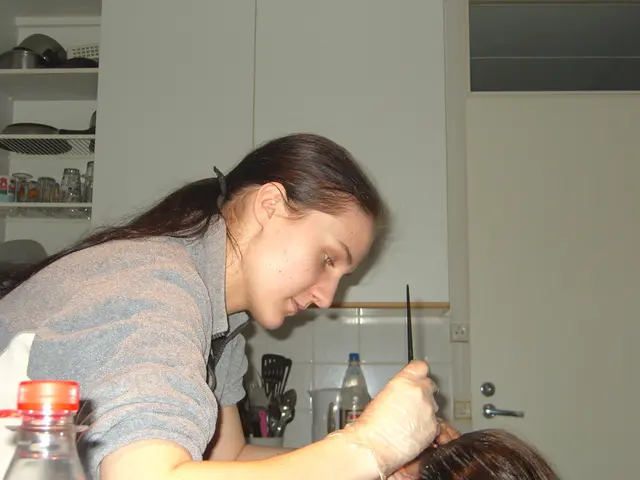Recognizing and Treating Low Testosterone Levels in Women: Insights and Approaches
Understanding the Role of Testosterone in Women, and the Impact of a Deficiency
Testosterone, notoriously known as a male hormone, is also present in women – albeit in smaller quantities. Alongside dihydrotestosterone, this hormone is considered the strongest biological androgen, as stated by the Institute for Medical Diagnostics in Berlin (IMD). While men produce around seven milligrams of testosterone daily, women make only about 0.2 to 0.3 milligrams per day, mainly from the ovaries and adrenal cortex. Testosterone production is controlled by the hypothalamus, pituitary gland, and pineal gland in the brain. Significant portions of testosterone in women are converted into estrogen, particularly estradiol.
Testosterone plays crucial roles:- Muscle growth- Bone growth and stability- Sexual drive and libido- Fat distribution- overall performance- Body hair growth
When the levels of testosterone fall short, women may experience:
- General Weakness and Reduced Libido: These symptoms can trigger a vicious cycle, as affected women may reduce their fitness training due to feeling uncomfortable and weak, exacerbating the effects of the deficiency.
- Frequent Muscle and Joint Pain: Testosterone deficiency can cause consistent muscle and joint aches.
- Inability to Achieve Desired Muscle Growth Despite Workouts: Muscle-building training is often ineffective due to low testosterone levels, often leading to rapid fatigue.
Testosterone Tests in Women: Overcoming Challenges
If you suspect symptoms related to a testosterone deficiency, you should undergo blood testing. It’s essential to keep in mind that test results may vary from lab to lab, and sometimes a large amount of protein binds to testosterone, making it difficult to accurately measure the free testosterone in the body. Additional complications arise because usual tests for men are frequently used, and the normal values in these tests are often too high for women.
Alleviating the Effects of Testosterone Deficiency
Fortunately, appropriate treatment can alleviate the effects of a testosterone deficiency in women. Oral preparations and gels, like those used for men, are available.
Common side effects of testosterone therapy can include:- Acne- Hair loss on the head- Higher levels of LDL cholesterol- Increased risk of thrombosis
It’s important to understand that treatment is not solely testosterone therapy; hormonal imbalances during menopause usually call for female hormone therapy first. The treatment typically begins with a dose of female hormones to balance the hormonal ratio and reduce side effects.
Addressing Testosterone Deficiency in Menopause
As women enter menopause, testosterone production decreases significantly, leading to a variety of symptoms. Around the age of 40, a woman's testosterone levels are only about half that of a 20-year-old woman. To manage these symptoms and improve overall well-being, treatments like testosterone replacement therapy may be helpful for sexuality enhancement.
Responding to Testosterone Deficiency in Women:
- Decreased Libido
- Fatigue
- Mood Issues
- Physical Changes (Loss of muscle tone, increased body fat, thinning hair, dry skin, vaginal dryness, and thinning bones)
To effectively treat testosterone deficiency in women, healthcare providers often use:
- Testosterone Therapy: Restores testosterone levels to premenopausal levels, potentially improving libido and energy.
- Bio-Identical Hormone Therapy (BHRT): Uses pellets, injections, or creams to mimic natural hormone replenishment.
- Lifestyle Changes: Maintaining a healthy diet, exercising regularly, and managing stress can complement medical treatments.
Consult a healthcare provider if you're experiencing these symptoms to determine the best treatment approach.
- Despite being predominantly associated with men, testosterone also plays significant roles in women's health-and-wellness, particularly in women's health, such as muscle growth and sexual drive.
- As women approach menopause, a decrease in testosterone levels can lead to symptoms like decreased libido, fatigue, and physical changes, which can be alleviated through testosterone therapy or bio-identical hormone therapy.








